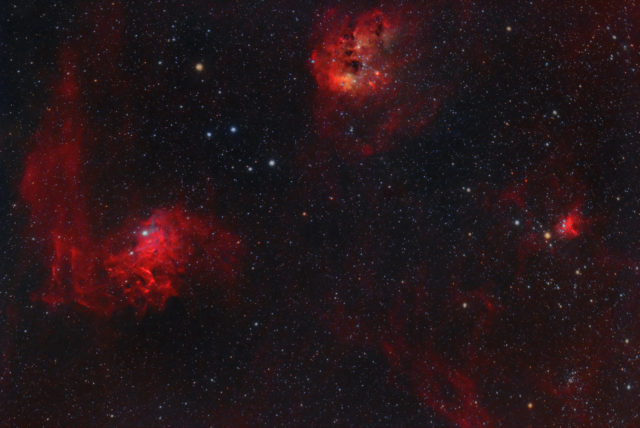
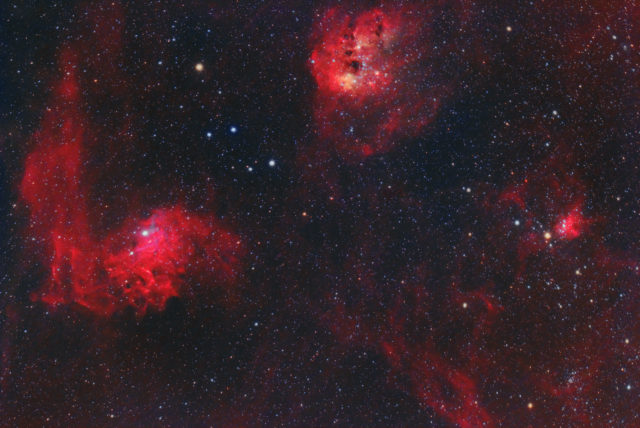
In the second week of 2024, the weather gave me a break on a Tuesday evening. It was going to be one really clear and totally transparent night and I could not let it pass without imaging something.
I was setup and was taking flats by dusk. But, the object I really wanted to get data on was not going to be in position until about 2:00 AM the following morning. So, I needed to kill time and this area of the sky in the image above (Auriga) was in prime position. I managed to get 3.75 hours before the mount reached the meridian and it was time to flip it.
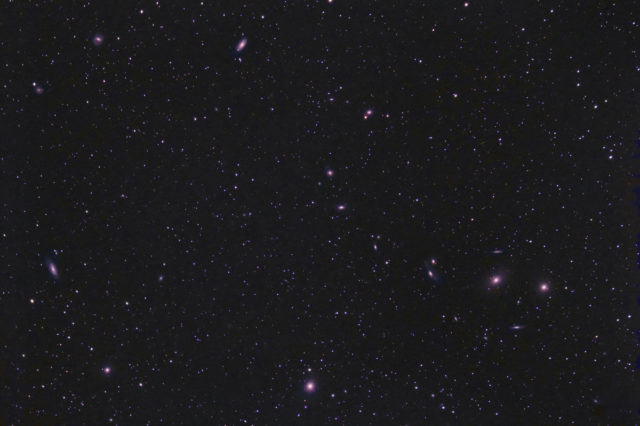
At this point, I had another 2 hours of waiting, so instead of flipping the mount, I went with imaging the Virgo Cluster with this very wide field rig. Not too bad for only two hours, but it needs about double what I had time for.
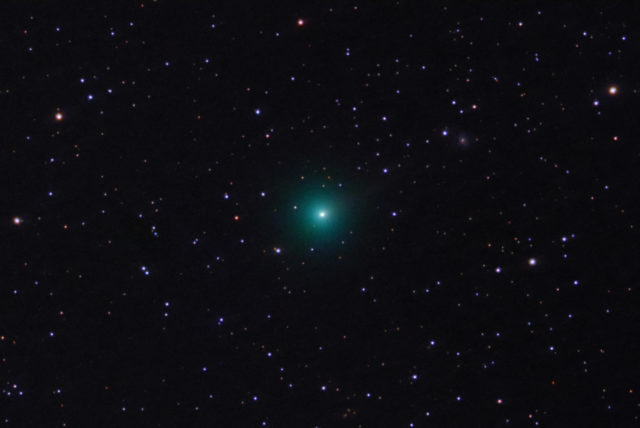
Finally, Leo and Comet 62/P, the object I was really after, was high enough to get data on, and I managed 45 sub-images of it. I have two versions. One is the cropped version above that I did first.
The full field version is below, which I restacked a couple of times to get a better background-stars-only image. One stack was done with SharpCap, and then I re-calibrated the subs in FitsWorks and stacked them again in IRIS, which was not as noisy as the Sharpcap stack. These two stacks were combined and then the comet-only images was composited in.
Not a very big comet, but it has a tail, at least. I don’t think it will get much better than this, unfortunately. It already passed perihelion in December and will make the closest approach to Earth before month’s end. It was forecast to slowly dim over the next few weeks.
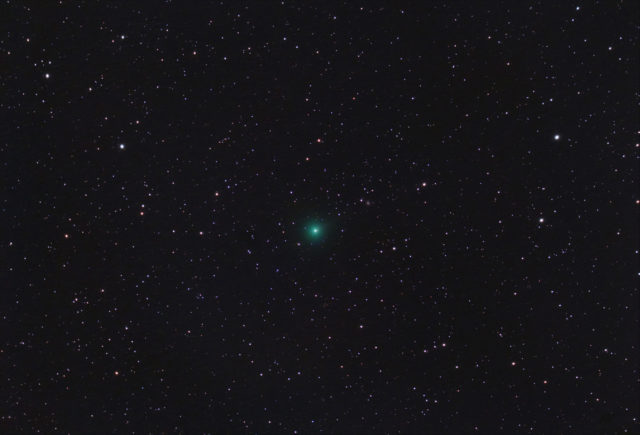
I stopped imaging the comet shortly before dawn. I had to work that day, so I grabbed my scope and laptop and brought them in and tried to sleep for an hour or so. I had napped during the night, but still lacked enough sleep to function. It took a couple of days to recover enough to do the processing for these. lol
